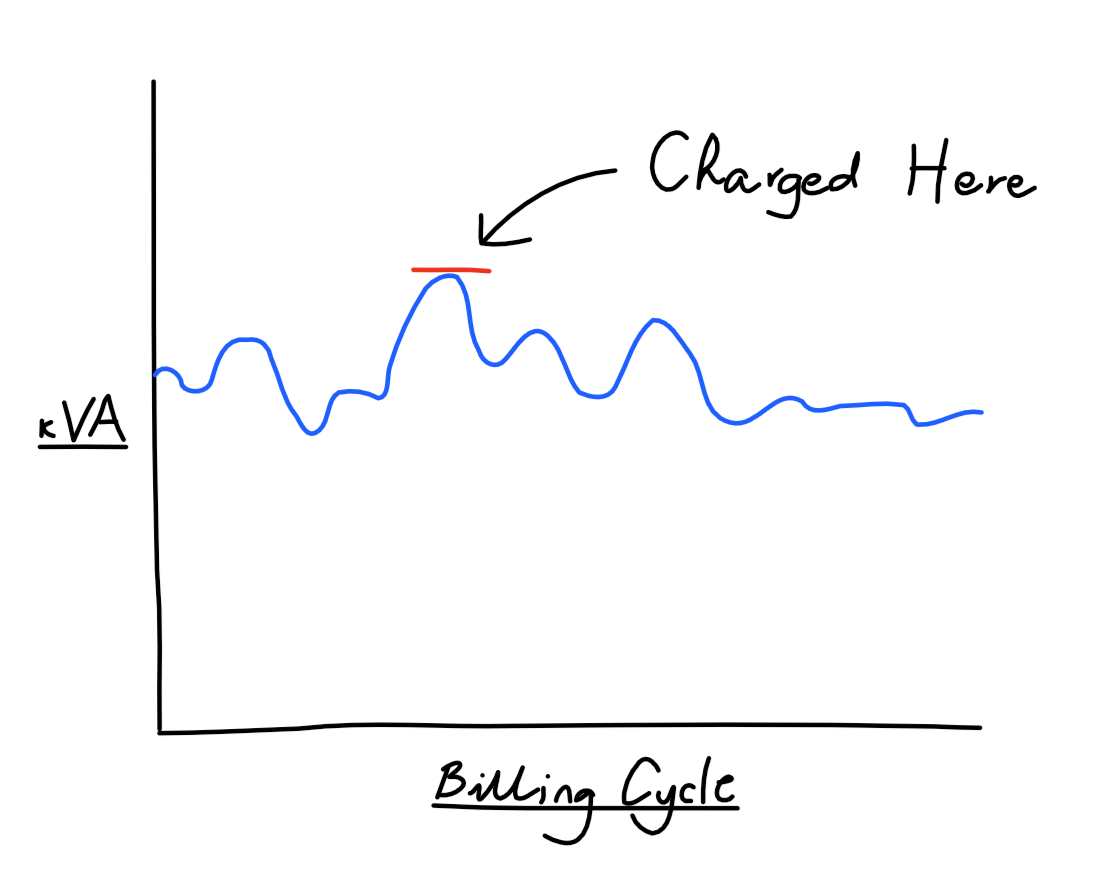 Demand" On Your Utility Bill?
Demand" On Your Utility Bill?Slipping a check into the monthly utility bill without giving it much thought is a thing of habit. Open the bill, look over the final charge, and then make out the check while bickering over how the utility company is ripping off consumers.
The monthly cycle continues, with little to no change, no matter how high the charges are. However, there is a way to significantly reduce the total monthly and yearly charges placed on a bill, saving, hundreds, if not thousands of dollars in the long run. This is through identifying and correcting the total demand.
When looking of a utility bill, there are many lines of information with odd numbers and prices listed. Once such line of data is the “Peak Demand” listing. This is a number, calculated by the electric company, which determines the highest peak amount of energy the facility used over a given time frame (generally 20 minutes or so).
The electric company must know what the total demand for every household and business is, in order to better assess their ability to provide power to all clients in the service area. The total demand is then charged onto the client’s account each month.
Most utility companies include the peak demand listing on each bill. This is because the peak demand is taken once a month. This is the fairest method of measuring the total demand, as it generally fluctuates throughout the year.
However, some companies only monitor it once, then charge the overall peak demand on every statement for the following year. When this practice is performed, the demand listing is not always posted on the bill.
In order to receive a copy of the total demand, and what month the peak demand is taken from, the home owner or business manager must contact the utility company.
Many individuals and businesses are not overly conscientious over the amount of electricity consumed during the day. Energy efficient light bulbs and equipment may be in use, but if all are running simultaneously, the peak demand is higher, as more power is required in order to run all the equipment at once.
Even turning off all lights and other equipment for most of the day, then turning all on for an hour or two does not help with the total demand.
It does reduce the overall electric bill, but running all the equipment at once for just an hour a day still increases the peak demand.
In order to reduce the total peak demand of an energy bill, several steps must be taken. Yes, switching out current light bulbs for energy efficient options is a valuable first step, but still leaves a long way to go.
Disconnecting equipment from electrical outlets when not in use is also helpful, but this is more for reducing the overall electric bill and not the total peak demand.
In order to reduce the overall demand, you simply cannot be running all of your equipment at the same time.
As long as it doesn’t reduce productivity in the office, leave all equipment not in use turned off and shut down. Then, when the hardware is required, turn off the opposite equipment.
Running one device at a time, instead of two, not only significantly reduces the total energy consumption for the month, but greatly drops the total overall demand also, which further sinks the monthly billing statement.
Performing this action drops a company’s bottom line, allowing the business to spend more monetary assets elsewhere and potentially grow the company, which in turn improves the longevity of the corporation and its financial stability for years to come.
Peak Demand is called a lot of different names and sometimes takes a Rocket Scientist to figure them out. Don't get discouraged if after reading this article, it just doesn't make sense.
IF You would like to learn more about how to proactively monitor peak demand, check out
Topics: peak demand, energy efficient